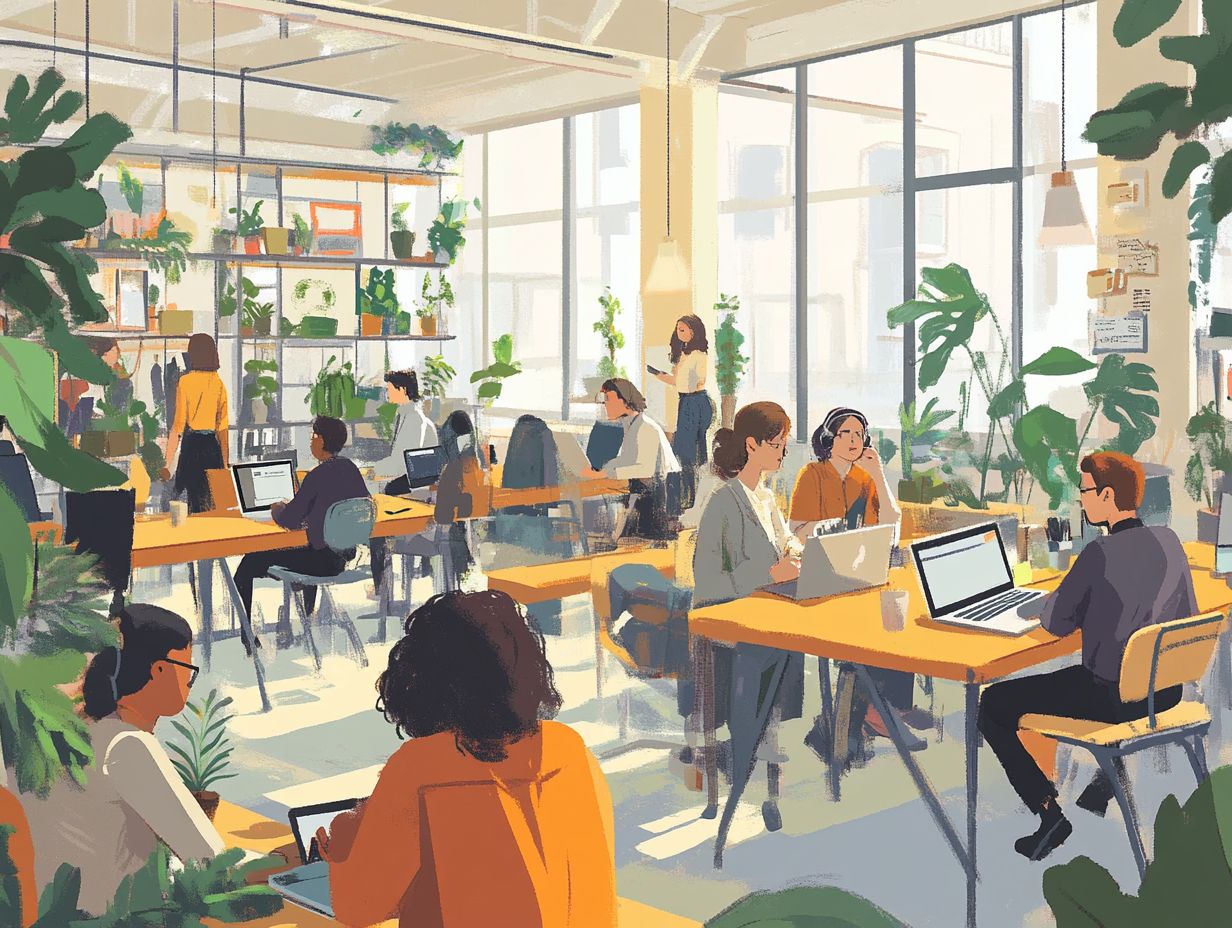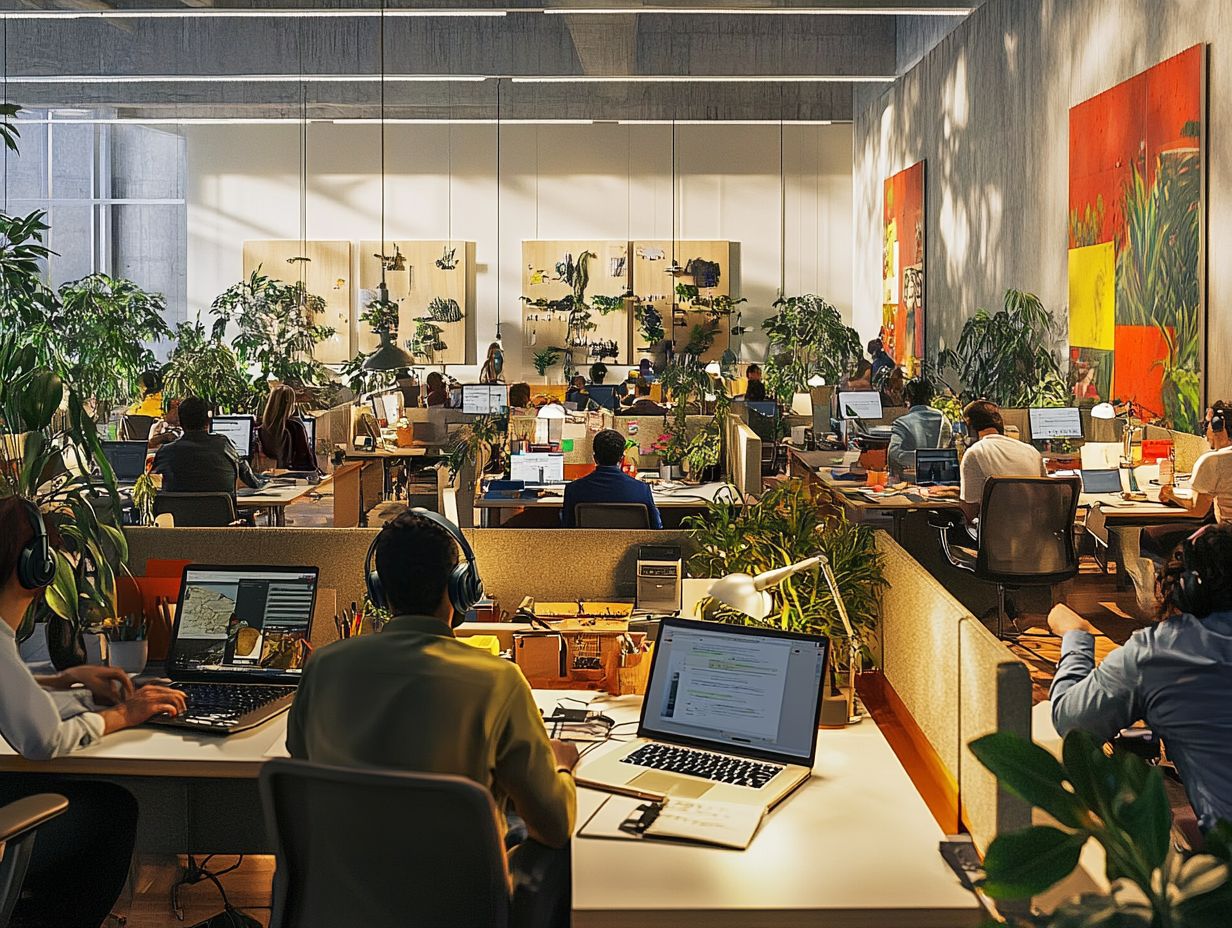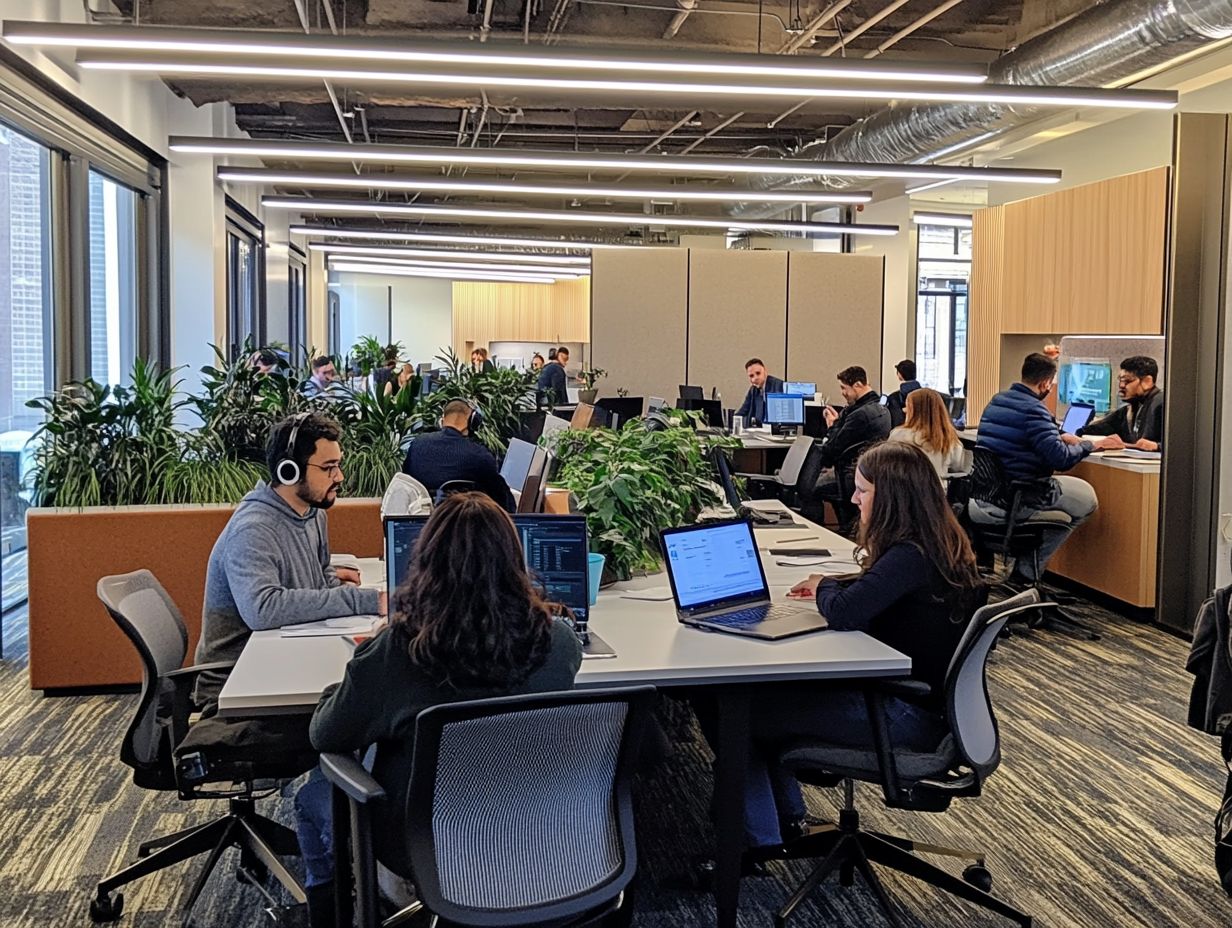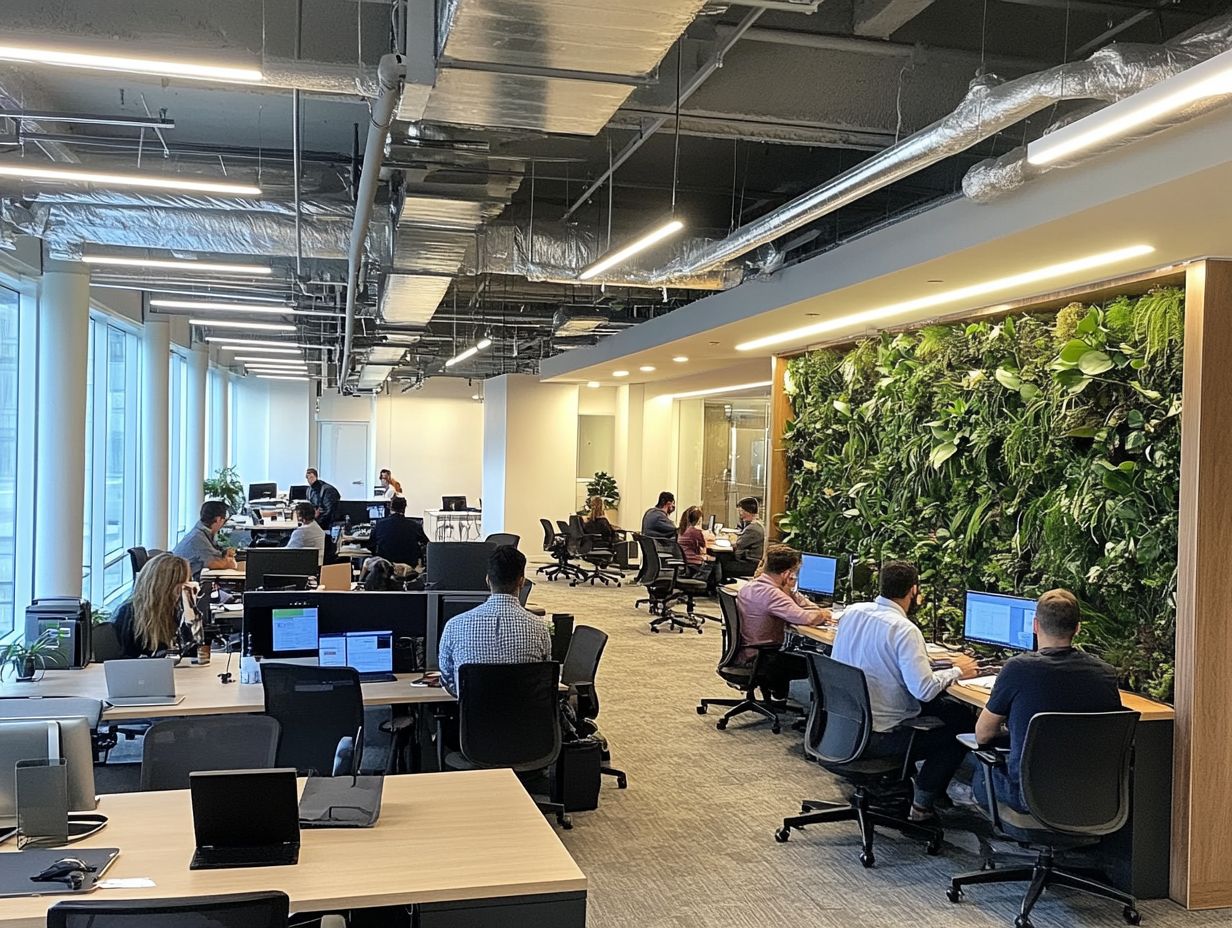In today’s fast-paced work environment, characterized by open office spaces and constant connectivity, the concept of **deep work**, as discussed by Cal Newport and referenced in various Harvard studies, has emerged as an essential skill for achieving meaningful productivity. This article delves into the true meaning of **deep work** and its numerous advantages, while also addressing the distinct challenges presented by **open office layouts**. Practical strategies will be provided to foster a **distraction-free workspace**, establish boundaries with colleagues, and effectively manage your **time**. Furthermore, we will examine methods for measuring **success** in this pursuit, enabling individuals to unlock their **full potential** despite the surrounding distractions.
Key Takeaways:
The Concept of Deep Work

The concept of Deep Work, as articulated by Cal Newport, pertains to the capacity to concentrate without distraction on cognitively demanding tasks. According to Asana, a platform known for enhancing team collaboration and work management, deep work involves techniques that can significantly boost your concentration.
In an environment increasingly characterized by workplace distractions and digital interruptions, the mastery of deep work has become imperative for knowledge workers seeking to enhance productivity, foster innovation, and optimize workflow.
By allocating uninterrupted time to focus on complex cognitive tasks, individuals can optimize their workflow, enhance their emotional well-being, and substantially diminish the costs associated with interruptions, thereby leading to increased workplace productivity.
Defining Deep Work and its Benefits
Deep work is defined as the capacity to concentrate on cognitively demanding tasks without distractions, resulting in improved productivity and enhanced emotional well-being.
This type of focused effort is especially vital for knowledge workers, as it allows them to engage thoroughly with complex issues and develop innovative solutions. For example, task batching—where similar tasks are grouped together—enables individuals to allocate uninterrupted blocks of time to significant projects, thus increasing overall efficiency.
Research from Asana indicates that professionals who implement deep work strategies frequently experience greater job satisfaction and reduced stress levels, as they are capable of producing high-quality results in less time. This approach not only enhances their overall work output but also provides more quality personal time, facilitating a healthier work-life balance, as highlighted in their exploration of deep work.
The Challenges of Deep Work in an Open Office
While open offices have emerged as a prevalent trend in office design, they pose considerable challenges to achieving deep work. Factors such as workplace distractions, office noise, and frequent interruptions from colleagues can significantly impede concentration.
These environments often obstruct the necessary focus time, resulting in increased distraction costs and cognitive overload for employees. Given that team dynamics and collaboration spaces are primarily designed to enhance communication, it becomes particularly challenging to identify individual workspaces that effectively support deep work.
Distractions and Interruptions

Distractions and interruptions in the workplace can have a significant impact on attention spans and productivity, particularly in open office environments.
In such settings, employees frequently face a variety of disturbances, including the constant chatter of colleagues, ringing phones, and the persistent allure of digital notifications. Research conducted by Gloria Mark, featured in a podcast by the American Psychological Association, indicates that interruptions can consume nearly 28% of an employee’s workday, making it increasingly challenging to focus on complex cognitive tasks.
This resultant loss of concentration can impede individual performance and may also adversely affect teamwork and collaboration, ultimately reducing overall organizational effectiveness. With distractions occurring approximately every 11 minutes on average, it is imperative for businesses to address these factors to improve workplace efficiency.
Collaboration and Communication
Collaboration and communication are fundamental components of any workplace; however, they can often conflict with the necessity for deep work, particularly in open office environments.
The challenge lies in achieving equilibrium between these competing demands, as tools designed to facilitate interactions, such as Microsoft Teams and Slack, can inadvertently result in an influx of notifications that disrupt concentration.
While these platforms promote teamwork by streamlining discussions and project coordination, they may also impede productivity when frequent alerts divert attention from critical tasks.
Office design is a crucial factor in this dynamic, as environments that effectively integrate open spaces for collaborative work with designated quiet zones for focused concentration can significantly enhance both collaboration and deep work.
This deliberate approach enables employees to participate in meaningful conversations while also providing them with the opportunity to concentrate without distractions.
Strategies for Mastering Deep Work in an Open Office
Mastering deep work in an open office environment necessitates the implementation of deliberate strategies designed to establish a distraction-free atmosphere and to adopt effective time management techniques.
Knowledge workers can markedly improve their focus and productivity by employing methods such as task batching, mindfulness practices, and incorporating spatial breaks within their workspaces.
The integration of targeted productivity strategies specifically designed for open office settings can address the challenges posed by distractions while simultaneously fostering employee engagement and enhancing emotional well-being.
Creating a Distraction-Free Environment

Creating a distraction-free environment in an open office is essential for facilitating deep work and enhancing productivity.
Organizations can significantly improve employee focus by implementing a variety of methods. One effective strategy involves the integration of acoustic control measures, such as sound-absorbing panels and the strategic placement of soft furnishings, which help minimize ambient noise that often disrupts concentration.
Additionally, investing in ergonomic office furniture not only enhances comfort but also promotes healthy posture, enabling individuals to work more effectively for extended periods.
Establishing designated quiet zones where employees can retreat for tasks requiring intense focus further cultivates a culture that prioritizes concentration, ultimately leading to improved work outcomes and overall well-being.
Effective Time Management Techniques
Effective time management techniques are crucial for maximizing focus and achieving deep work in the face of distractions commonly found in open office environments.
One highly effective strategy is task batching, which involves grouping similar tasks together to minimize context switching. This approach enables individuals to maintain a continuous flow of concentration.
Another widely recognized method is the Pomodoro Technique, which segments work into intervals—typically lasting 25 minutes—interspersed with short breaks. This technique fosters sustained focus while simultaneously helping to prevent burnout.
Additionally, time blocking provides a structured approach to allocating specific time slots for distinct activities, ensuring that both collaborative efforts and individual tasks receive the attention they require.
By implementing these techniques, employees can enhance their efficiency throughout the workday, effectively balancing periods of uninterrupted work with necessary interactions.
Collaboration and Communication Strategies
Collaboration and communication strategies are essential for achieving a balance between teamwork and focused individual work, particularly in environments characterized by open office layouts.
To effectively cultivate a culture of cooperation and creative collaboration while respecting the need for individual concentration, teams should prioritize structured communication methods.
Utilizing platforms such as Microsoft Teams and Slack can streamline interactions, facilitating quick updates without the disruption of constant interruptions.
For instance, establishing specific times for team check-ins can ensure that all members have the opportunity to collaborate, while also safeguarding the time required for concentrated tasks.
Additionally, employing features such as channels in Slack or tabs in Teams can compartmentalize discussions, enabling employees to engage with relevant information without feeling overwhelmed.
This strategic approach not only enhances productivity but also contributes to a healthier work environment, emphasizing the importance of ergonomic posture and acoustic control.
The Importance of Boundaries, Communication, and Mindfulness Techniques

Establishing clear boundaries and effective communication with colleagues is essential for fostering a productive work environment and minimizing the costs associated with distractions during periods of deep work.
Setting Boundaries with Colleagues
Establishing boundaries with colleagues is a vital strategy for preserving focused work time within the dynamic environment of an open office, helping to mitigate interruption costs and distraction costs.
By implementing clear indicators, such as a ‘do not disturb’ sign or designating specific hours for uninterrupted work, individuals can cultivate an atmosphere that promotes productivity. Additionally, scheduling particular focus times can significantly reduce interruptions, enabling team members to plan their interactions more effectively.
Clear communication using tools like Slack is essential in maintaining these boundaries; by openly discussing needs and expectations, colleagues can create a more engaged and respectful workplace.
Promoting a culture in which all employees feel comfortable articulating their work preferences can enhance collaboration while simultaneously allowing for necessary personal space akin to private workstations.
Effective Communication with Co-workers
Effective communication among co-workers, using technology impacts like Microsoft Teams, is essential in an open office environment to enhance collaboration while respecting the need for focused work.
When teams prioritize transparent dialogue, they cultivate an atmosphere in which ideas can be exchanged freely, resulting in innovation and enhanced problem-solving capabilities, as observed in a Harvard study.
The utilization of various communication tools, such as Luxafor or Toggl, can facilitate streamlined interactions without overwhelming team members.
By establishing clear guidelines for communication, such as designated “focus hours” or “no-interruption” periods, team members can engage at their most productive times while also feeling enableed to reach out when necessary.
Furthermore, implementing regular check-ins and brainstorming sessions reinforces the significance of connection, ensuring that all individuals feel heard and valued, which ultimately contributes to a stronger team dynamic.
Measuring Success in Deep Work, a concept popularized by Cal Newport
Measuring success in deep work entails the assessment of various productivity metrics and output indicators to evaluate workplace engagement and personal growth within the professional environment.
Productivity and Output Metrics
Productivity and output metrics serve as critical indicators of success in deep work and can provide tangible evidence of efficiency within the workplace, as noted by Gloria Mark.
By evaluating factors such as task completion rates, the quality of work produced, and the time dedicated to focused activities, organizations can obtain valuable insights into employee engagement levels and overall performance, potentially resolving productivity issues.
For instance, measuring the time spent on deep work in contrast to periods of distraction can identify areas where improvements are warranted. Additionally, tracking the progression of project milestones can reflect not only an individual’s capacity for sustained focus but also the cumulative output that contributes to team objectives.
Ultimately, these metrics offer a clearer understanding of how dedicated work aligns with the broader goals of the organization, thereby fostering a culture that values both productivity and employee well-being, as emphasized by Steelcase and Brody WorkLounge.
Personal Growth and Development
Personal growth and development are essential elements in mastering the concept of deep work, as they promote emotional well-being and improve overall engagement in the workplace, akin to the principles outlined by Aristotle.
By prioritizing focused tasks and adhering to the principles of deep work, individuals cultivate a mindset that emphasizes resilience and discipline, which are vital for effectively navigating challenges in professional environments. This commitment not only enhances skill acquisition but also fosters stronger connections among colleagues, thereby improving collaborative efforts.
As individuals devote themselves to sustained periods of concentrated effort, they often experience an increased sense of satisfaction and fulfillment from successfully addressing complex problems, inspired by the Eudaimonia Machine.
This continuous journey of self-improvement is directly linked to long-term career advancement, as those who consistently practice deep work establish a reputation for excellence and reliability, thereby creating opportunities for further growth and development, often within Fortune 500 companies.



